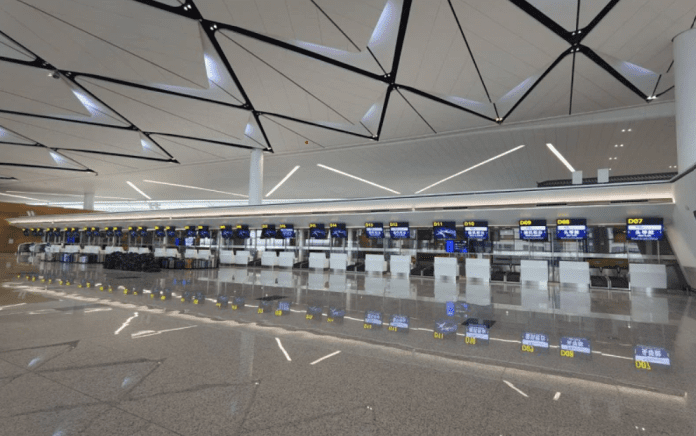China Mobile Chengdu has deployed Huawei’s 5G distributed massive MIMO solution at Chengdu Tianfu International Airport to build what it claims to be the first gigabit 5G airport in China, the Chinese vendor said in a release.
The field tests showed that the user-perceived rate across the check-in areas exceeded 1 Gbps, with the single-user rate increasing by 26% on average over common 5G networks up to a peak of 1.25 Gbps, Huawei said.
?Significant improvement was also displayed in both the perceived rate and overall network capacity in multi-user scenarios. This high level of network performance will provide a solid foundation for both common passenger services and 5G smart travel applications. The upgrade will help carriers fulfill the demand for premium mobile access and smart travel experience,? Huawei said.
Chengdu Tianfu International Airport is the second international air hub in Southwest China’s Sichuan Province. It has two terminals covering a total floor area of 719,600 square meters and is able to support 40 million passenger trips, 700,000 tons of cargo and mail, and 320,000 aircraft movements annually.
?Air travelers spend a considerable amount of time in airports watching videos, chatting with friends, and reading news on mobile devices, making wall-to-wall high-speed mobile access a core requirement. Major airlines are also launching 5G-based smart travel services, such as VIP recognition, luggage tracking, and AR map navigation, to improve travel experience,? Huawei said.
The network achieves high-speed experience for its users using Huawei’s digital indoor small cells combined with 5G distributed massive MIMO software functions. ?Distributed massive MIMO is vital to support wall-to-wall 5G gigabit speed,” the vendor said. “Incorporating the leading technologies of outdoor 5G massive MIMO into indoor networks, distributed massive MIMO provides indoor networks with joint beamforming and multi-user MIMO (MU-MIMO) to enhance both 5G network capacity and user experience. It improves signal quality by eliminating interference between channels working on the same frequency in multi-cell networks to provide a high-speed and high-quality experience in target 5G coverage areas.?

